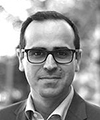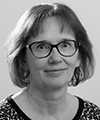
Developments in Rolling Circle Amplification for Prenatal Screening
Friday, November 4, 2022
12:30 PM – 1:30 PM CET
7:30 AM – 8:30 AM ET
FACULTY:

Alexandre Vivanti, MD, PhD
Associate Professor in Obstetrics and Gynecology, Antoine Béclère Hospital – University Paris Saclay, France

Geralyn Lambert-Messerlian, PhD
Pathology & Chemistry Lab Professor, Brown University, Women & Infants Hospital, Rhode Island, USA

Glenn E. Palomaki, PhD
Pathology Professor, Brown University, Women & Infants Hospital, Rhode Island, USA

Olof Karlberg, PhD
Vanadis Diagnostics, Sweden

Tarja Ahola, MSc
Market Development Director NIPT
AGENDA:
| Introduction Tarja Ahola, MSc, Market Development Director NIPT |
| Screening for main aneuploidies with Rolling Circle Amplification in twin pregnancies Alexandre Vivanti, MD, PhD This is a retrospective analysis of a large cohort of twin pregnancies whose samples were tested by rolling circle amplification. The presentation will review the diagnostic accuracy for common trisomies (21, 18 and 13) in a first-line screening context. The results will be compared to literature data with the main aneuploidy screening tests that are used routinely. |
| Evaluation of a simplified cfDNA screening method for common autosomal trisomies: Issues and updates Geralyn Lambert-Messerlian, PhD This presentation will describe the multicenter VALUE study conducted at Women and Infants Hospital in Rhode Island for clinical validation of a simplified cfDNA screening method for common aneuploidies. The collection of plasma samples and results of cfDNA analysis using the Vanadis testing method will be discussed, along with advantages and areas for improvement. |
| Prenatal screening performance of the RCA methodology Glenn E. Palomaki, PhD Presentation of preliminary results from an international collaboration of five laboratories using a commercial cfDNA test based on rolling circle amplification (RCA). Data relating to test variability were collected between April 2019 through July 2022. The aims were to determine whether variability was device independent and whether manufacturing and/or analytic changes reduced variability. |
| Live Q&A Session Alexandre Vivanti, MD, PhD Geralyn Lambert-Messerlian, PhD Glenn E. Palomaki, PhD Olof Karlberg, PhD |